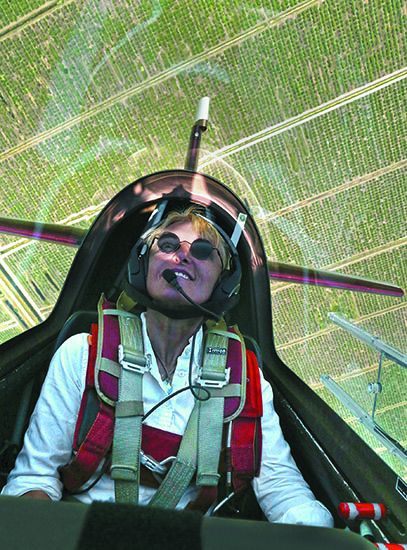It’s that subject we pilots don’t really want to think about—and often only speak of in hushed tones: Do we really have a fighting chance if we have to stuff the airplane into someplace that doesn’t even remotely resemble a runway?
The answer is that yes, we do have a good chance of surviving a forced landing in hostile terrain if the airplane has restraint systems that include a shoulder harness, everyone wears theirs, the systems have been inspected and maintained, and the pilot follows a few rules regarding how to put the airplane down.
We’ll start with an in-depth discussion of crash dynamics. Then we’ll look at how aircraft design, pilot decision-making and restraint systems work together to protect occupants during an accident sequence and finally we’ll take a deep dive into restraint systems, what’s good and what’s not, how to maintain them and what is available to if you want to upgrade the restraints in your airplane.
ACCIDENT RISK
If a pilot is going to have an accident, it’s most likely going to involve runway loss of control (RLOC) and hitting something off of the runway, collapsing the landing gear and/or flipping the airplane. For some tailwheel airplanes, RLOC make up over 40 percent of their accidents.
The sole good thing about RLOC accidents is that they almost always happen at or below stall speed—except for the knuckleheads who make wheel landings in tailwheel airplanes at the speed of heat.
For the sake of argument, we’ll consider accidents that start the rapid deceleration process at stall speed as low-speed accidents. The good news is that, even with the early crashworthiness designs of airplanes from the 1940s and ‘50s, if the occupants are wearing a seatbelt and shoulder harness, most of the time those accidents are survivable.
That also goes for engine failure forced landings—if the pilot touches down near stall speed, without stalling the airplane—and there is some clear distance ahead for the airplane to decelerate, there’s an excellent chance that everyone wearing the full restraint system will survive.
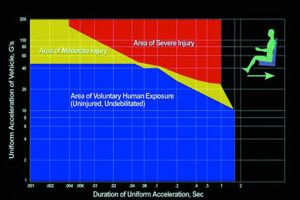
IMPACT DYNAMICS
Once touchdown/impact speed increases above stall speed or the available space to decelerate to stop is less than a few hundred feet, the magnitude of the deceleration may be such that, even with a perfect restraint system, the human body cannot withstand the G loads. At some point the aortic arch will fracture, internal organs will tear loose and/or there is enough head trauma to be fatal.
Kinetic energy—the energy of a moving airplane—is a squared function. That means when you double the speed of the airplane, say from 30 knots to 60, you don’t double the force of impact—the force is quadrupled. That’s why it’s important, when you have the ability to control the speed of the airplane prior to touchdown or impact, every knot you can slow it down pays big dividends.
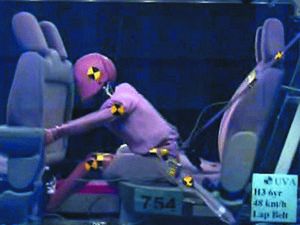
That’s also why the FAA requires relatively low full-flap stall speeds for single-engine airplanes—it reduces the risk for the occupants in a forced landing.
The squared function is why we consider an accident above stall speed a high-speed crash.
Since World War II, there has been a massive amount of research done in the world of crash dynamics, including some dramatic full-scale tests led by NASA with airplanes donated by Piper and Cessna. The results have caused great strides forward in the crashworthiness of general aviation airplanes with landing gear designed to absorb energy and tear off without transmitting that energy to the aircraft occupants and energy-attenuating seats, to name a few.
In our research, we learned that while crashworthiness wasn’t the concern in the 1940s, ‘50s and ‘60s that it is today, the aluminum airplanes of those years do a good job of crushing and absorbing energy during an impact rather than transmit it all to the fragile humans within.
THE SILVER BULLET
The very good news in the crunched airplane world is that the widespread use of shoulder harnesses has reduced fatalities in general aviation accidents by 20 percent, according to the FAA—which tracks such data—and serious injuries by a whopping 88 percent.
Added to the seatbelt, the shoulder harness has proven to be the silver bullet for reducing injuries and death for aircraft occupants. Keeping the occupant’s mid and upper torso attached to the seat means that the person will not continue forward into something more resistant to impact than the human body when the aircraft slams to a stop.
In addition, designing the cabin area in front of the occupants to be free of objects that can hurt them as they go forward during airframe deceleration and the panel comes back due to impact forces improves survivability.
FLAIL SPACE
Aircraft design is an exercise in compromises—keeping weight down and minimizing frontal area and drag mean that most aircraft have limited “flail space” in front of the occupants. That is the area where the occupant’s arms, legs and head are going to flail around during an impact sequence.
It’s also essential to note that there is no human being in the world strong enough to “brace yourself” against flailing. If there’s something to hit in that flail space, the occupant is going to hit it, hard. The shoulder harness and seat belt restraint system has proven effective in keeping occupants attached to their seats so that the only things that go into the flail space are arms, legs and to a lesser extent, the head. This means that important stuff doesn’t hit the hard stuff.
Science and experience have shown that even more protection is gained with active occupant restraints, notably, seatbelt airbags. There’s more on those in the sidebar on the next page.
POST-WAR RESEARCH
After World War II, the research into occupant restraint went into high gear. Fairly early on full-scale testing showed that wearing just a seatbelt was helpful in very low-speed crashes—and we’ll note here that seatbelts were originally installed in airplanes to keep pilots in the seat in turbulence, not for protection during a crash.
The thinking prior to the 1950s was that airplanes were built to fly, not crash. That mindset killed a lot of people in little airplanes and it caused significant resistance to shoulder harnesses when they were introduced. Starting in 1946, Cessna offered shoulder harnesses as an option for every seat in its singles.
No one ever ordered one. Cessna eventually made them standard, we’ll before required to do so by the FAA, but faced pushback from customers. Beech made shoulder harnesses standard in the 1950s but stopped doing so for years due to buyer pushback.
The rocket sled human deceleration tests, known as the Stapp Tests for organizer Col. Joe Stapp, run in the late 1940s, explored the effects of deceleration on a properly restrained human body.
Stapp himself rode the rocket sled at over 600 MPH and withstood on the order of 40 G during deceleration, although that number could never be duplicated. The conclusions of the tests were that a properly restrained, healthy human could withstand at least 25 G provided that the rate of onset of the G load wasn’t nearly instantaneous.
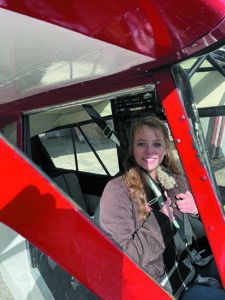
PASSENGER PROTECTION
Knowing all of the above, what can a pilot/owner do to maximize protection for passengers and her/himself when there’s going to be an impact?
No matter what type of airplane is involved, the tenets of crash survival are the same: 1. The occupants are fully strapped in—shoulder harness and seat belt during the entire flight, 2. The speed of the initial impact is minimized (force of impact is a squared function), so use full flaps, and 3. The airplane has as much space as possible to slow down between the initial impact point and where everything comes to a stop.
Corollaries to those rules include:
A. If you can install shoulder harnesses for all of the seats in your airplane, do so. We’ll talk about what’s available in a minute.
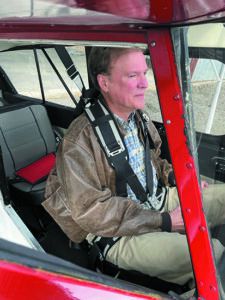
B. Don’t get out until the airplane has come to a complete stop. Getting “thrown clear” or “jumping clear” kills too many people every year, in cars and airplanes. Getting ejected from the vehicle while it’s still moving means hitting the ground or an object and coming to a quick stop, causing fatal injury.
C. Touch down with no side load. The available flail space is in front of you. Touching down yawed may mean that even with a good restraint system, your head hits one of the solid support posts on the side of the cabin.
D. Fly the airplane all the way through the crash. Keep doing all you can to make it go where you want it to go. That also means looking where you want to go. All of your life you have unconsciously been making vehicles and yourself go where you are looking. If you look at the rock you want to avoid, you’ll hit it. Look at the route you want to follow.
E. If you groudloop, keep the stick/yoke all of the way aft. That will put weight on the tailwheel and minimize the risk of flipping over.
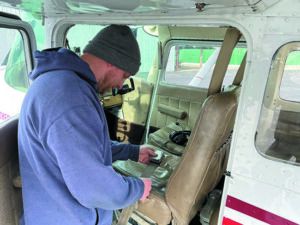
THE SURFACE
The full-scale NASA tests on Cessna 172s and Piper Navajos brought out an unexpected result. If you have to make a forced or gear-up landing, do so on pavement if possible.
A test of a 172 impacting at a shallow angle onto pavement at just above stall speed showed that while there was a significant impact, and the nosegear and underside of the cowling were badly damaged, the force of that first impact was survivable. The airplane then slid along the pavement for a few hundred feet before coming to a stop—an overall low rate of deceleration.
The test was repeated—same descent angle, same speed—onto a dirt surface. The dirt gave, forming a shallow crater, and brought the airplane to an immediate stop. That caused deceleration so high that the accident was not survivable.
Further, we have been unable to find evidence that anyone has been injured or killed in an inadvertent gear-up landing since World War II. Part of that is because most of those landings have been on pavement. We have seen significant damage to airplanes that landed gear up on grass runways as the turf gave way, tore or balled up, causing the aircraft to stop quickly or flip over.
Retractable gear airplanes are designed to land gear up; it’s part of the requirements in the FARs. Fuel lines are raised some distance above the lower fuselage to reduce the risk of fire. Based on our research it is our recommendation that if you have to put an airplane on the ground under conditions you don’t like, you’ll improve your odds of a good result if you can land on pavement.
ASSUME THE POSITION
If you do have to make a forced landing, make sure the restraint system is tight and lean into the shoulder harness to take out the slack (and get the inertia reel lock engaged). If you have time, put some padding in front of you—a coat, pillow, blanket, anything.
Open the doors prior to touchdown and block them open a short distance. Shut off the master switch and fuel prior to touchdown to reduce the risk of an electrical short starting a fire and fuel feeding a fire.
UPGRADE?
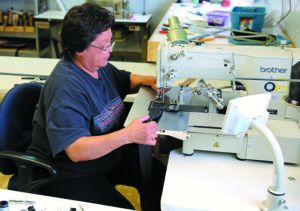
The shoulder harnesses that came as standard equipment in most airplanes in the field are of the single-over-the-shoulder variety. They do their job and have kept a lot of people alive. However, there is a risk of rotating out of the single strap during an accident, so the double-over-the-shoulder version is better. We also like inertia reel shoulder harnesses because they automatically tension the harness during the occupant’s movements. The less slack in the belts as an impact starts, the better.
For the owner who wants to upgrade by installing shoulder harnesses or move up to a four- or five-point restraint system, there are a number of options. For many aircraft the upgrade is nothing more than what the FAA refers to as a minor modification and requires only a logbook entry. Advisory Circular AC 23-17C (at page 101) has guidance. Generally, if there is a hardpoint or structure where a shoulder harness can be attached, it’s a minor modification. After all, the FAA knows the value of shoulder harnesses and wants to make installing them as easy as possible.
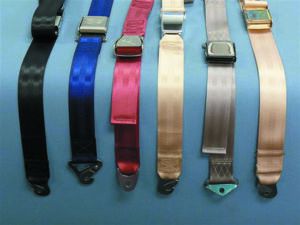
The second method of upgrading is via STC, which is most often the way to go when adding the more sophisticated restraint systems.
Upgrades available
Here’s what we found during a survey of upgrade options.
Hooker Harness (www.hookerharness.com) is we’ll known for its aerobatic restraint systems but it also offers a line of fixed three-, four- and five-point harnesses for the front seats of most GA aircraft. Prices start at $300 per seat.
BAS (www.basinc-aeromod.com) offers a line of inertia-reel four-point restraint systems. It seems to us that the list of aircraft they are approved for just keeps expanding—Piper, Beechcraft, Cessna and Luscombe. They do tend to be limited to front seats, but not always. Prices begin at $1,710 for both front seats (black webbing) and $1,730 for your choice of available webbing colors. Check with BAS for exact pricing and rear-seat availability.
Alpha Aviation (www.alphaaviation.com) sells replacement and upgrade three-point fixed-strap and inertia-reel kits for a large selection of Piper, Beech, Cessna and Ercoupe aircraft—mostly for front seats. Prices start at $1,290 per set (two front seats) for fixed-strap kits with inertia reels being about $250 higher.
Aero Fabricators offers a four-point shoulder harness (the seat belt must be purchased separately) through Wag Aero (www.wagaero.com) starting at $79 per seat. The Wag Aero website is poorly set up and does not explain the types of aircraft on which the harnesses may be installed. In the past we had noted that the harnesses were STC’d for most of the seats for the Cessna 100 and 200 series, fabric-covered Pipers and PA-24 and -28 series as we’ll as Beech 35s and some Stinsons and Aeroncas.
INSPECT, REPLACE
As with anything in an airplane, restraint systems wear out. The perennial question is how much wear is acceptable? The FARs call for following the manufacturer’s maintenance instructions, but there are no definitive guidelines for what is an acceptable level of wear and what isn’t.
Bottom line, restraint systems are on-condition replacement items. We spoke with Phil Heisey, director of maintenance at Northern Air, a backcountry FBO in northern Idaho.
He referred us to the maintenance instructions from Aircraft Belts Inc. (www.aircraftbelts.com), which called for inspection of the webbing, hardware, stitches and TSO tags on restraint systems.
Those said that if there is fraying (individual strands of yarn unraveling), tearing of strands or stitches, severe staining or severe fading and/or the hardware is worn, oblonged, corroded or rusted—or the system is more than 10 years old—it should be sent out for repair or replacement.
Everyone we spoke with said that useful life of webbing is 10 years. UV rays break it down, weakening it.
We also note that if the aircraft has been in an accident in which the restraint systems were loaded, they should be pulled and repaired or replaced.
The connection between the seat belt and shoulder harness on older Cessnas often doesn’t age we’ll and may not stay attached during normal flight operations. If so, it should be repaired or replaced immediately.
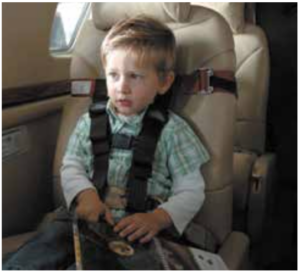
In addition to its seatbelt airbags, AmSafe also developed a non-airbag child restraint system that is FAA-approved for use in general aviation aircraft. It is for kids aged two to four years with a weight range of 22 to 44 pounds and less than 40 inches tall. It may only be used in forward-facing aircraft seats. It is not a car seat and is not approved for use in cars.
The design is creatively simple and effective—it includes a band that wraps tightly around the seat in which a child will be sitting at a level above the child’s shoulders. A set of shoulder straps hang from the band.
The regular seatbelt for the seat is threaded through the loop at the base of each shoulder strap and the seat belt is then buckled at the child’s waist and tightened. The next step is to fasten the clip connecting the two shoulder straps about midway between the child’s waist and shoulders. Finally, the shoulder straps are tightened. If the seat the child is occupying has shoulder harnesses, they are not used; the CARES unit has its own built in, designed for the size of the child.
We watched a video of one person settling a child into the seat and securing her with CARES within one minute.
In an emergency, all that’s necessary to release the restraint system is to unbuckle the seatbelt and lift the CARES unit over the child’s head. It looked to us to take about five seconds. We’ve used a number of child seats that took longer.
CARES is priced at $74.95 and is sold through Kids Fly Safe (www.kidsflysafe.com). The unit weighs one pound and folds flat into a small carrying case.
AmSafe also developed versions of CARES it refers to as “Special CARES” for special needs children from 41 to 56 inches tall as we’ll as children and adults more than five feet tall. Using one of the Special CARES systems requires an exemption letter from the FAA. The Kids Fly Safe website explains how to apply and get an exemption and provides a template for the application.
We’ve wrestled with child seats in general aviation airplanes, and occasionally had to have two people involved to get one into its proper place. We think CARES can make life simpler for pilots flying with children.
REPAIR? REPLACE?
A great time to upgrade is when it’s time for the 10-year replacement of the system, but, if you like what you have, repair is the better route.
The most common repair needed is rewebbing. We found that it’s not expensive and takes about two weeks with priority shipping.
There are a number of companies that specialize in rewebbing restraint systems. We spoke with Aviation Safety Products in Blairsville, Georgia (www.aircraftseatbelts.com) and learned that the company turns around rewebbing orders in five to seven days.
The procedure involves inspection of the hardware, including the inertia reel, to confirm it can be reused—which is usually the case. The old fabric is discarded and new webbing sewn onto the hardware using the stitching pattern and thread approved for the particular type of belt or shoulder harness so that it will meet the appropriate FAA G-loading requirements. If hardware does not meet inspection criteria, it is replaced.
Once the system has been built up, it is visually inspected for conformity and condition of the hardware, including functioning of buckles and inertia reels. The FAA 8130 Airworthiness Approval tag is filled out and the assemblies are shipped.
We learned that as part of quality assurance and confirmation that rewebbed belts conform to their type design and FARs, rewebbing operations periodically test that completed belts meet pull requirements and the webbing meets burn requirements.
The industry is competitive. Prices for seat belts alone start at under $100 and increase with the complexity of the system.
CONCLUSION
Shoulder harnesses have proved to be the silver bullet for accident survivability. We recommend installing them in all seats, if possible, and inspecting them regularly as they do wear out.

